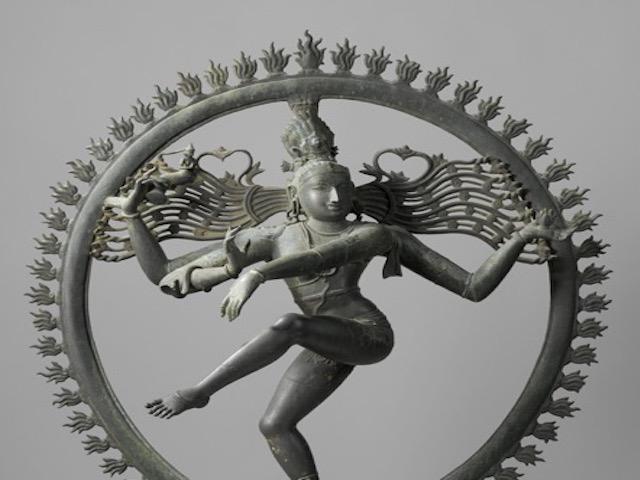Shiva Natajara

The Shiva Natajara sculpture is a mesmerizing depiction of the Hindu god Shiva in his form as the lord of dance. This stunning bronze sculpture, created around the 12th century by an unknown sculptor, captures Shiva in the midst of his cosmic dance, known as anandatandava. The sculpture portrays Shiva surrounded by a ring of fire, symbolizing the cycle of creation and destruction in the world. In this particular figure, Shiva is shown dancing on top of a dwarf, representing his triumph over ignorance and evil forces.
The intricate details of the Shiva Natajara sculpture showcase the skill and artistry of the sculptor, from the flowing movements of Shiva's dance to the expression of divine grace on his face. The symbolism behind the sculpture is rich and profound, reflecting the Hindu belief in the eternal cycle of life, death, and rebirth. Shiva, as the creator and destroyer of the world, embodies the dualities of existence and the ultimate power of transformation.
This iconic sculpture continues to hold great significance in Hindu culture, particularly in southern India where it is still used in processions during festivals. According to legend, Shiva's cosmic dance was a response to the threat posed by a dwarf sent by his enemies. In a display of divine power, Shiva subdued the demon and crushed him underfoot, symbolizing the triumph of good over evil. The Shiva Natajara sculpture serves as a reminder of the eternal struggle between light and darkness, and the ultimate victory of righteousness.
Visitors to museums or cities where the Shiva Natajara sculpture is displayed are captivated by its beauty and spiritual significance. The sculpture's dynamic composition and symbolic imagery invite contemplation and reflection on the mysteries of existence. Whether viewed as a work of art or as a sacred representation of a deity, the Shiva Natajara sculpture continues to inspire awe and wonder in all who encounter it.
© ChatGPT 3.5